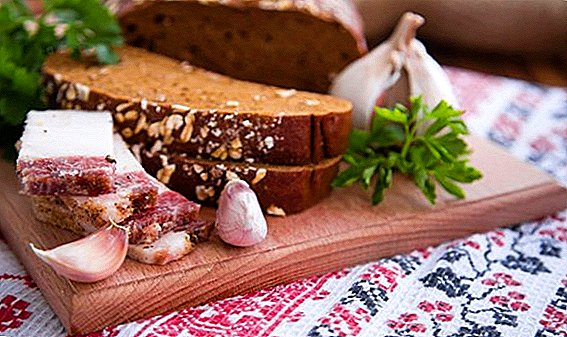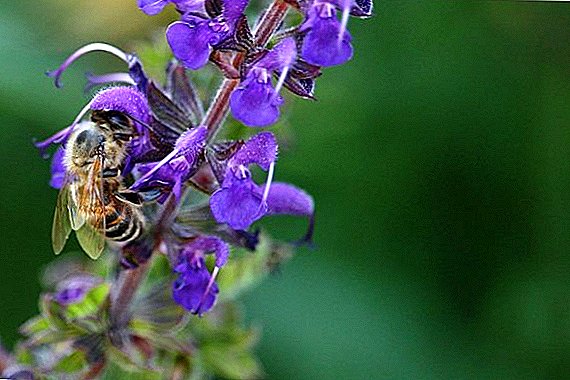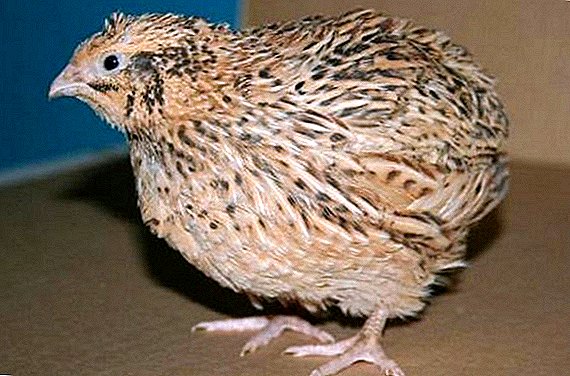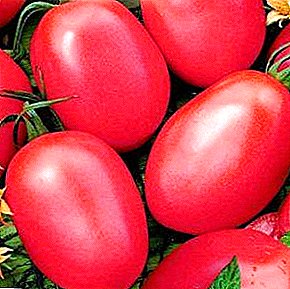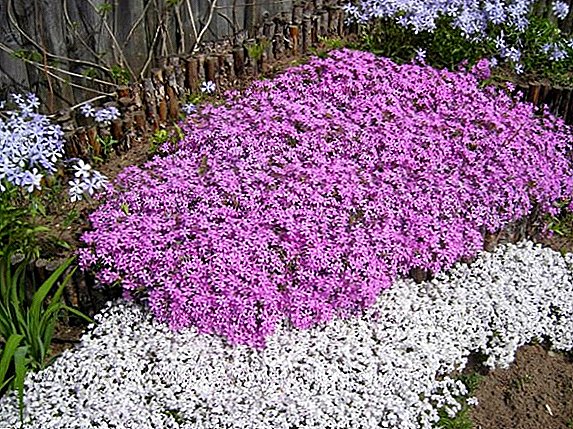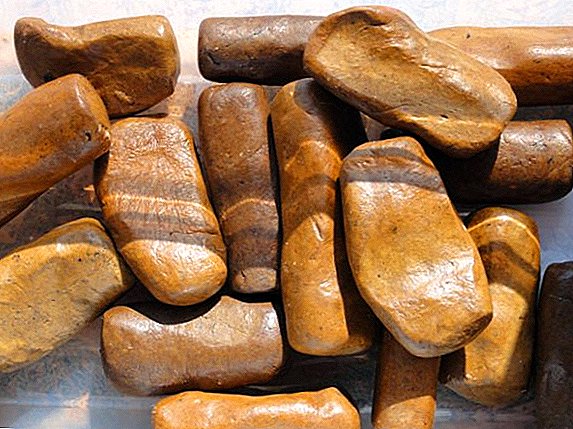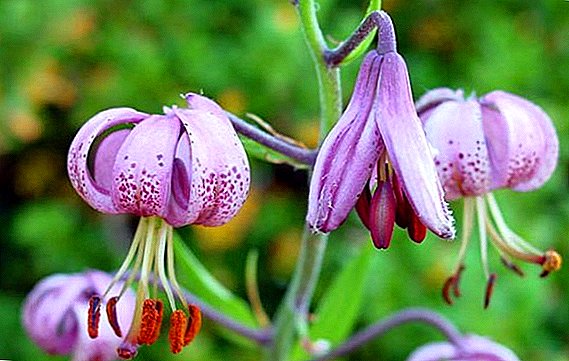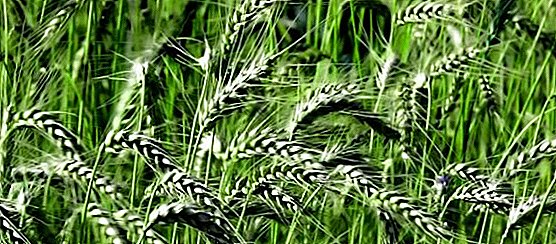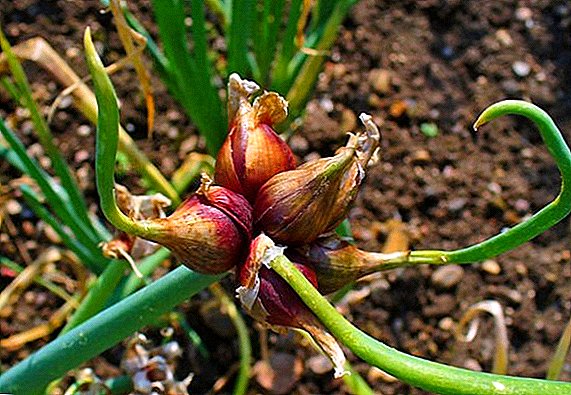
Onions are planted by many gardeners, due to the fact that it is unpretentious in cultivation and has a lot of useful properties. It is added to salads, various dishes and eaten just like that with bread. There are many varieties of this plant, and in this article we will consider such an unusual look as a multi-tiered bow.
Bow description
The name of this plant corresponds to its unusual appearance. Instead of the inflorescences that we are accustomed to seeing in the usual varieties of onions, aerial bulbs are formed, which are located on the tubular arrow in the form of "nests", and basal bulbs. These onions are sometimes called bulbs, they are covered with durable peel. The plant forms links of shooters with bulbs, which are arranged in levels above each other. The length of the first arrow reaches 65-80 cm, on it are the largest bulbochki. Such levels can be from 4 to 5. In one inflorescence grows from three to ten heads. The leaves are pleasant to the taste and very juicy, they retain this property for a long time. Air and basal bulbs have a more bitter taste, but they are also eaten, added to various dishes, pickled, and so on. 
Features
Tiered onions have good fertility, due to the fact that from the center of the inflorescence grow new arrows with bulbs, and this goes on several times. The peel of the bulbs is yellow, brown or purple. It ripens faster than all other types of onions and produces greens from March to November. It has a more developed root system when compared with the usual onions.
Did you know? It's no secret that when cutting onions, everyone starts to cry. But rarely anyone wondered why this was happening. It turns out that it contains a substance such as a lacrimator. When cutting onions, this substance is released, dissolves on the shell of the eye, and because of this, sulfuric acid is formed, which causes irritation, and then tears.Sometimes you can see small flowers on the arrows, but usually they dry out pretty quickly, due to the fact that they lack nutrition. Growing multi-tiered onions does not require special care, and in addition it has good resistance to harmful microflora and various pests. In addition, it is a drought-resistant and frost-resistant plant. He does not care for frosts at -50 ° C without a lot of snow.

Landing technology
Planting material for multi-tiered onions are its aerial and underground bulbs. It is best to land basal or airy bulb from the first and second tiers. The best time for landing is August and September. They manage to root well to the first frost and immediately after the snow melt they will be pleased with the harvest of juicy greenery. Also bulbs can be planted at home. To do this, they need, without dividing, stored in a cool dry place and in the period from October to February to land in the sowing boxes to a depth of about two centimeters. So you will provide yourself with fresh greens and vitamins during cold weather.
Of great importance in cooking, as well as in folk medicine, are the usual and everyday for all the results of the cultivation of onion varieties: Onion, Shallot, Leek, Batun, Schnitt, Slizun.As for planting on the beds, the multi-tiered species prefers a light, moisture-proof and breathable soil with a non-acidic environment. Tiered onions are grown both annual and perennial plant. Before planting, it is necessary to fertilize the soil well, so that you are sure of a good harvest. For an annual plant, apply nitrogen (20-30 g), phosphate (50 g) and potash (30 g) fertilizers to the soil. And for perennial add to the soil more manure or humus about 5-7 kg per square meter. It is necessary to plant the bulbs in the pre-made and watered grooves at a distance of 15-20 cm and a depth of 3-4 cm. It is also recommended to distribute the bulbs in size and plant each group in a separate row. After planting, water the plant well, so that it gives roots faster.

Care
Caring for a multi-tiered onion consists of a standard set of actions. Like any plant, it needs moderate watering, loosening and weeding the soil, as well as removing dry leaves during growth. As soon as the arrows appear, they must be fixed on the pegs so that they do not fall to the ground due to the gravity of the air bulbs. 
In the spring, after the snow melts, it is recommended to feed ammonium nitrate and potassium sulfate at the rate of 10 g per 1 square meter. It also does not hurt to add to the soil weak solutions of mineral fertilizers after cutting the leaves. This will enrich the already wonderful harvest.
Important! To prevent the occurrence of respecia (mildew), the plant should be treated with a one-percent solution of Bordeaux liquor.
How to breed a multi-tiered bow
Multiply onion can only be propagated vegetatively. Seeds in this type of onion does not happen. For breeding choose the largest air bulbs, which are usually located on the first tier. In addition, it can be propagated by dividing the bush. To do this, you need to dig up the plant, divide the underground bulbs and transplant them to another place. The scheme of planting underground bulbs is no different from the air. 
Beneficial features
Most of the multi-tiered onions are vitamin C, which is found in the leaves of the plant. It also contains carotene, vitamins B1, B2, PP and a large amount of sugars. In addition, it contains essential oils and a wide list of mineral salts of such chemical elements: potassium, calcium, phosphorus, iron, zinc, manganese, copper, boron, nickel, cobalt, molybdenum.
Did you know? Tiered onion has high phytoncidal properties and because of this it has been widely used in traditional medicine to improve digestion, to treat hypertension, beriberi, with gum diseases and common colds.
Harvesting and storage of the crop
In the second half of July and in the beginning of August, the air bulbs become brownish-purple in color, which means that it is time to harvest the first crop. The leaves are cut, and the bulbs are harvested and dried in the sun.
Important! When you harvest, cut the leaves completely do not need, leave about 5 cm to the neck of the bulb. If you do not, then you can weaken the plant.In the fall you will be able to harvest again a crop of new greenery. And the air bulbs collected in the summer can already be planted again, since they have practically no period of rest. Part can be planted on the plot, and the other part can be saved until winter and land at home. But this is how you wish.

A multi-tiered onion - this is perhaps the ideal plant for any gardener, because planting and caring for him are not a big deal. In addition, he has a lot of useful properties and never stint on a good harvest. Therefore, rather stock up with everything you need, plant it in your garden, and soon you will enjoy a pleasant fresh taste and replenish your body with vitamins.


